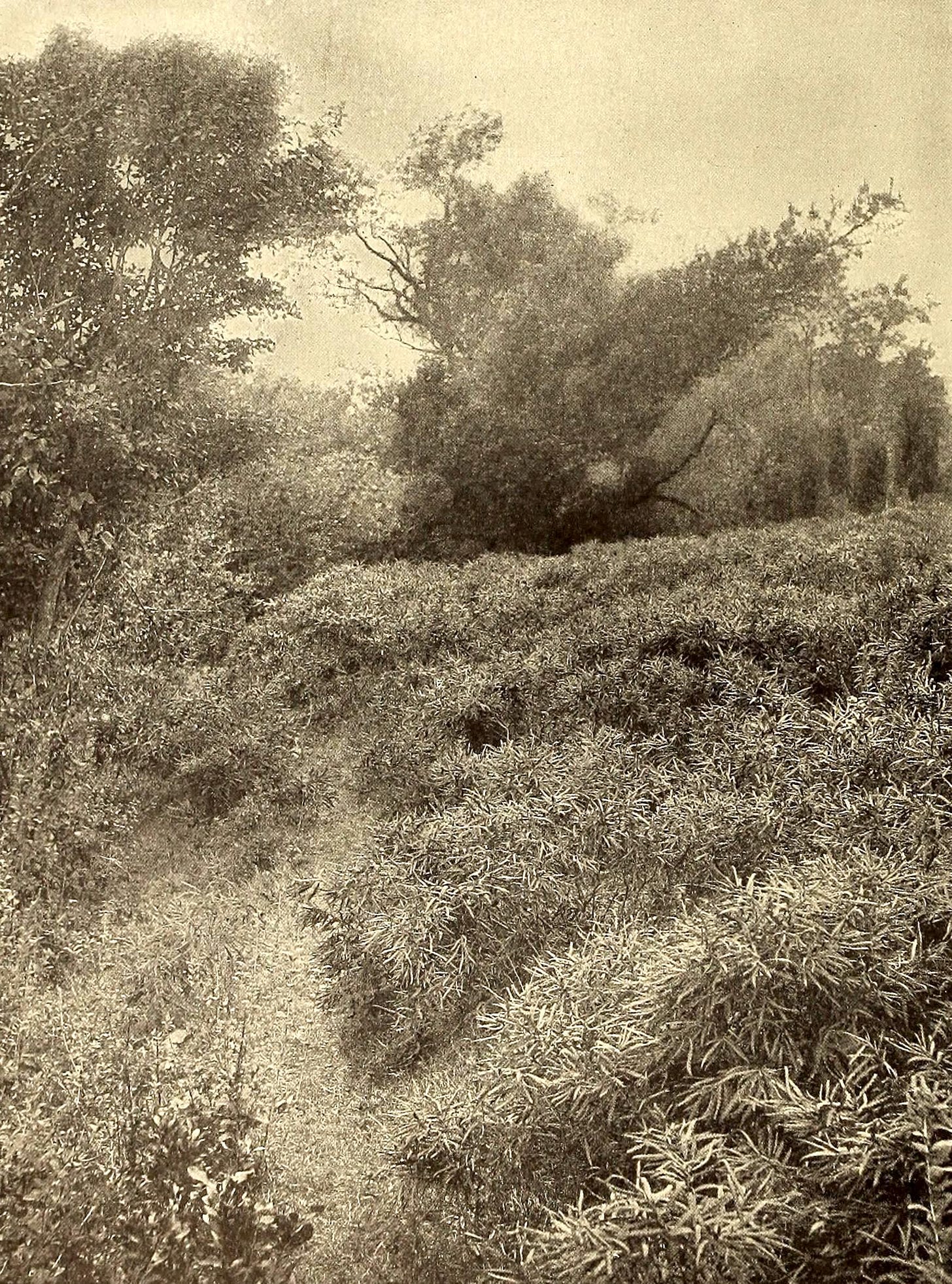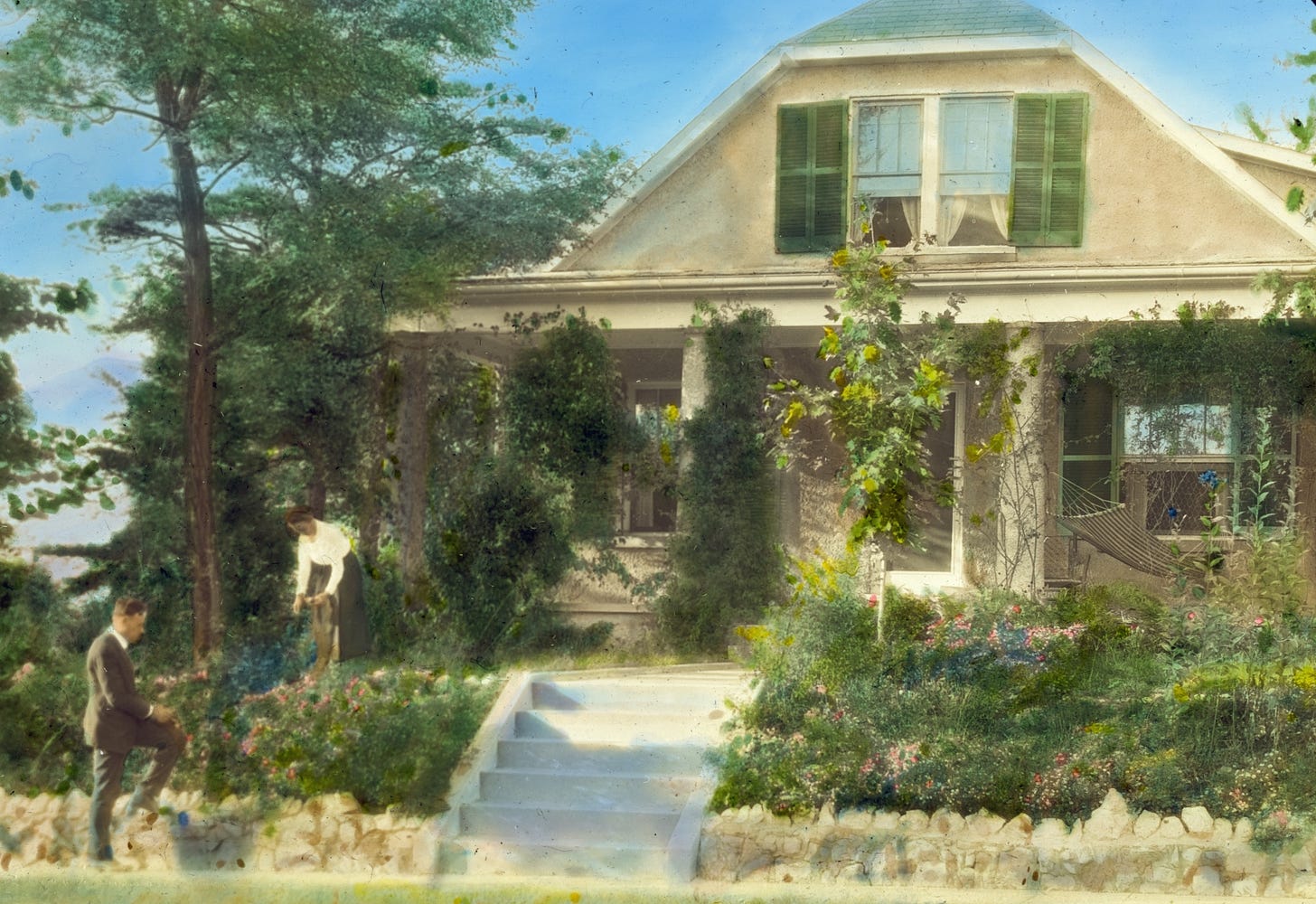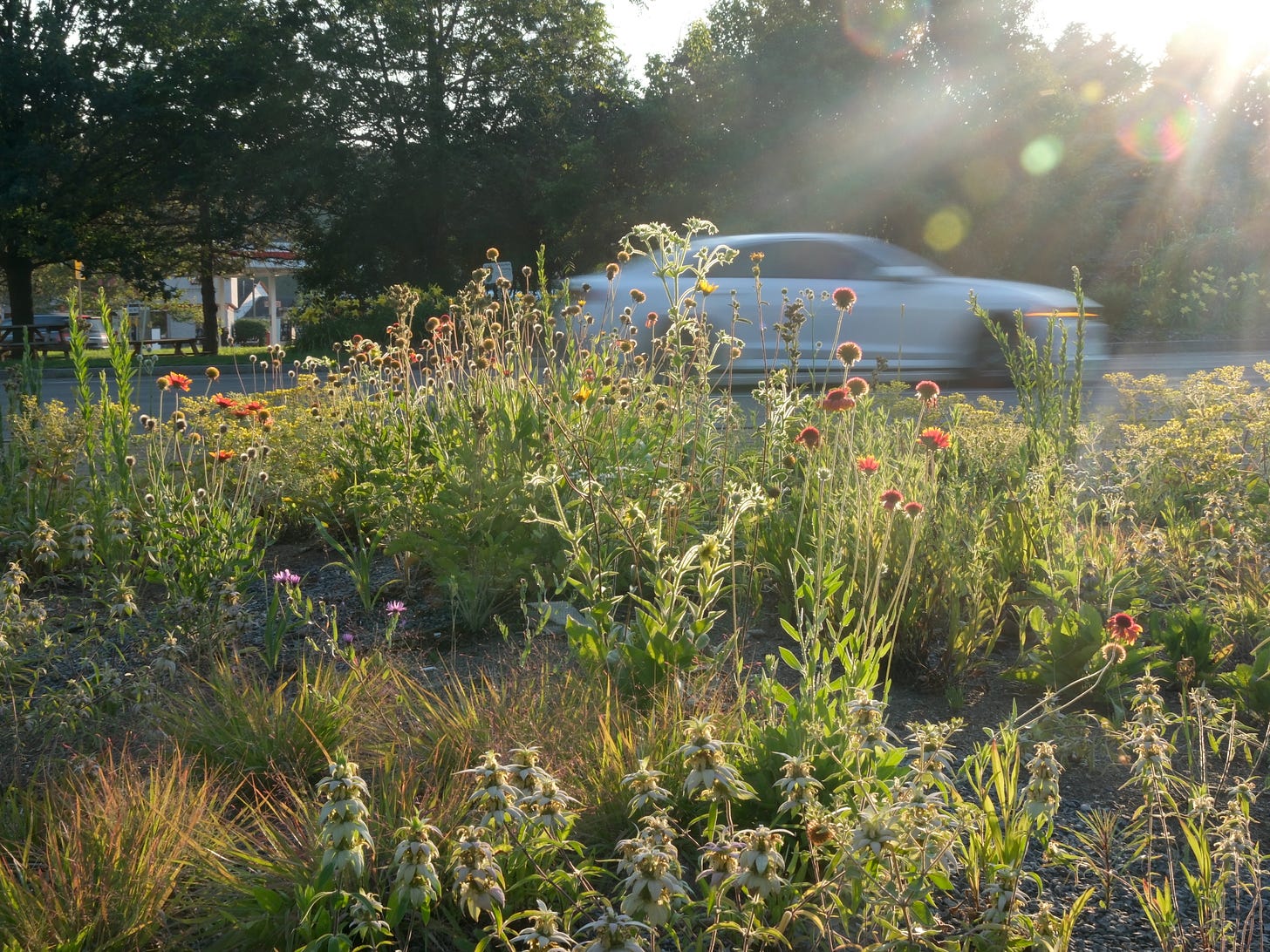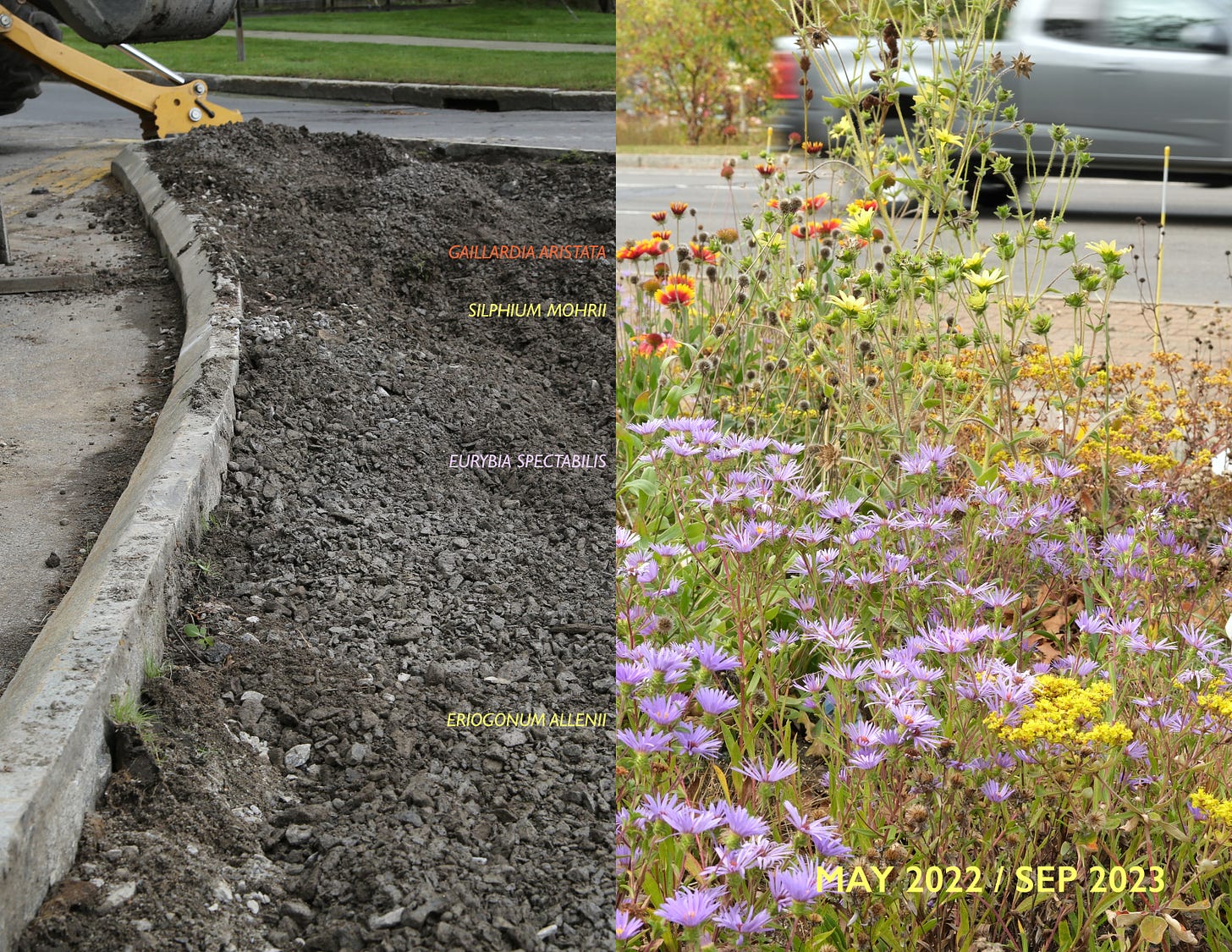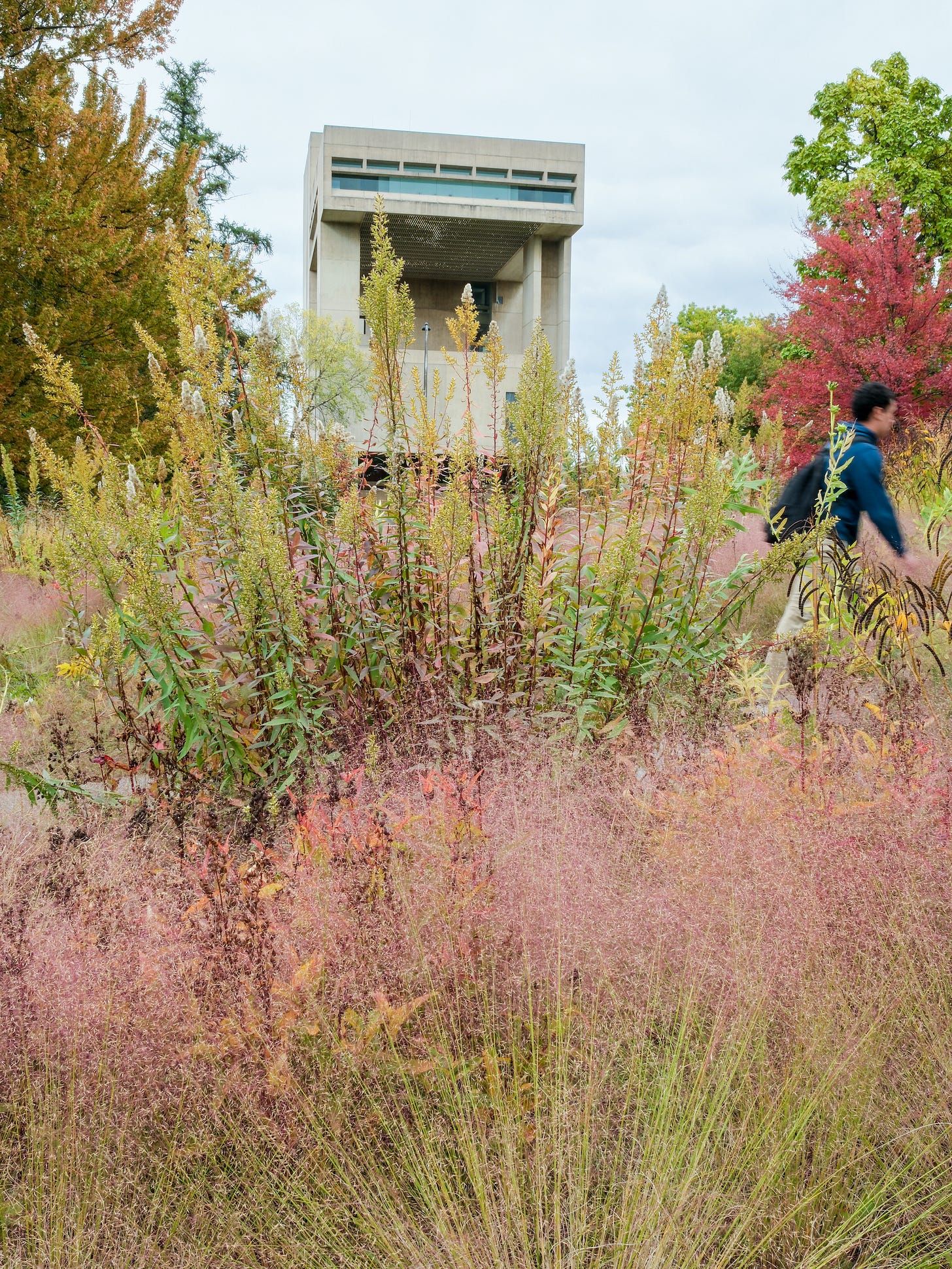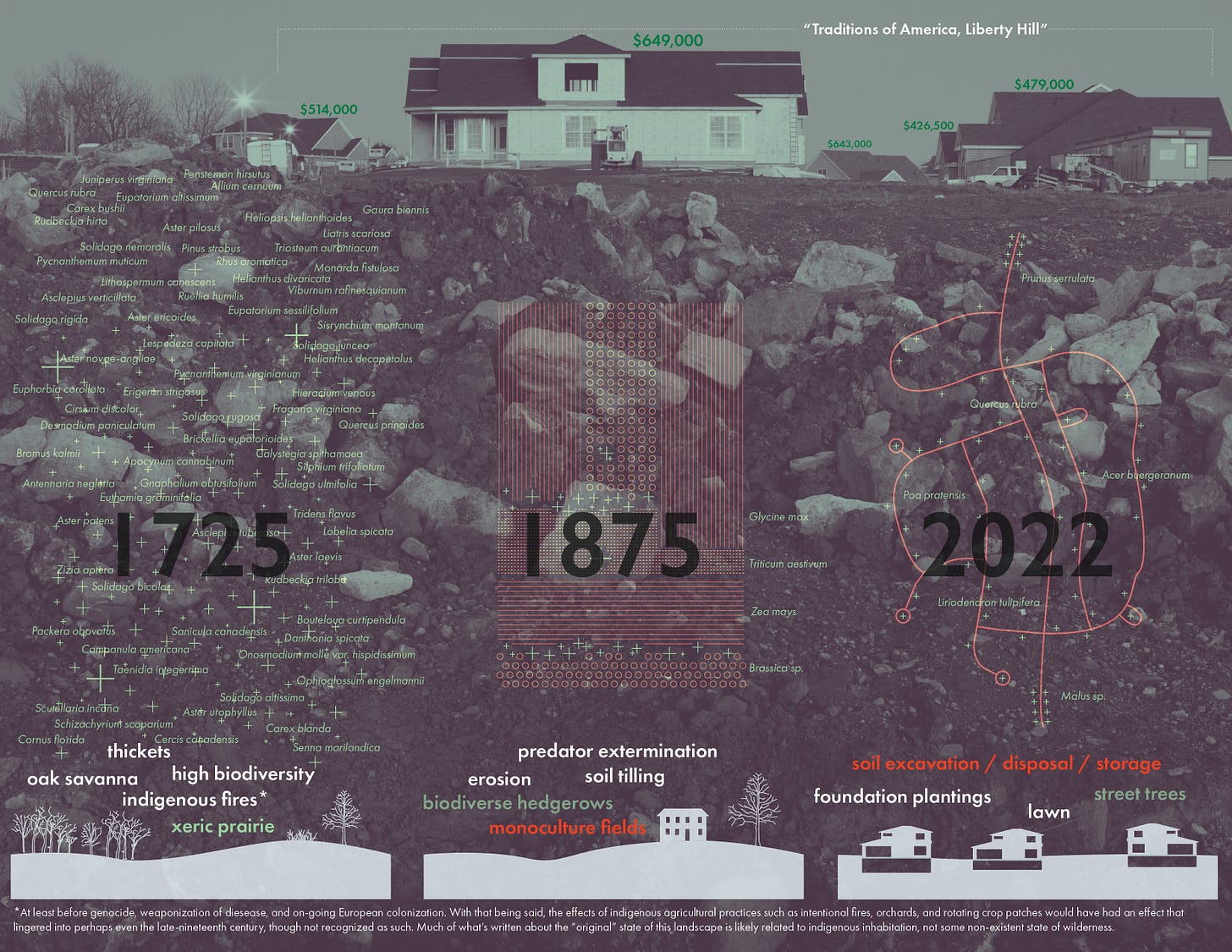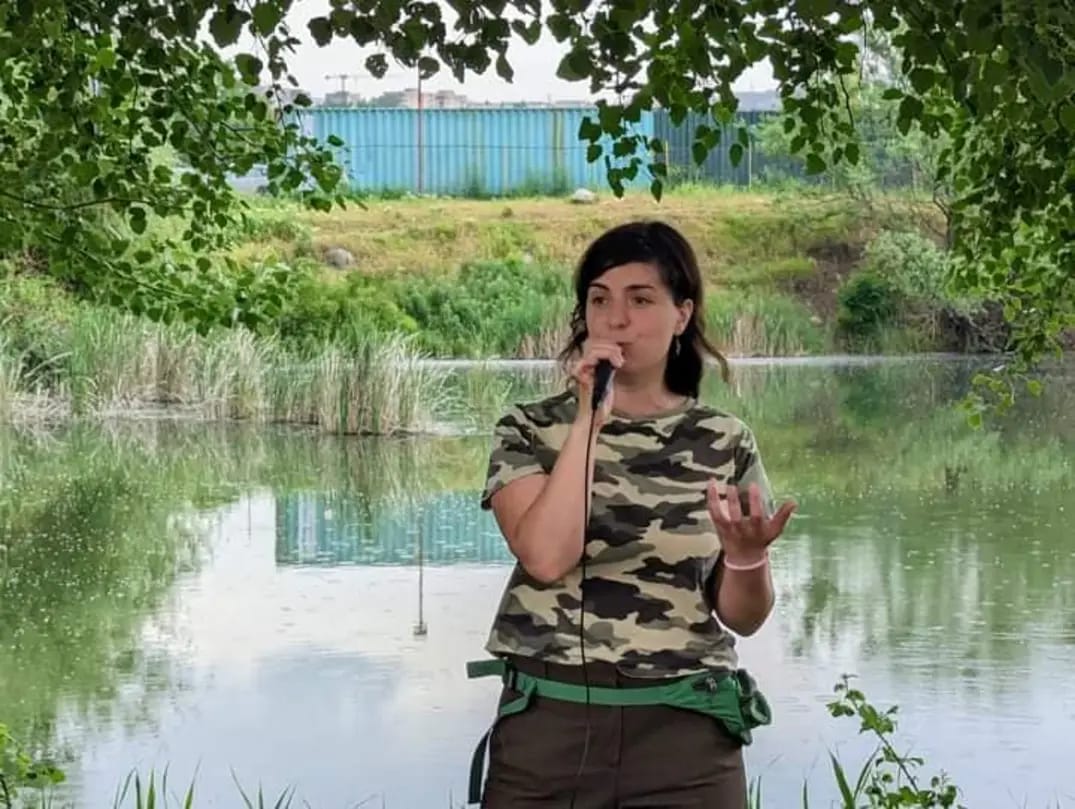A staircase descends into the quarry at Warren Manning’s wild garden at Dolobran. This project haunts my recent thinking about plants and design. In this image, I particularly like how you can see the response of the spontaneous plants on the stairs to foot traffic. It’s easy to overlook that this garden was an intimate process of people, plants, and design. There’s something important about this image to remind us that historical projects had a seedbank that expressed itself through seeds germinating on a stone staircase.
We’re down in the Dolobran quarry now. Look at the curve of this path and how the vegetation is trimmed back to create a certain effect, yet it is also allowed in areas that run a bit out of control. It’s a place that receives care—skilled labor—in the service of an experience with wildness and plants.
This is a garden, photographed in 1907, that I think would draw attention today. I’m pretty sure it’s part of Manning’s quarry garden. It appears that the planting is derived from the process—either the spontaneous generation of the Comptonia or a few were planted and allowed to spread. And there’s this path, this designed line jogging up the slope. It’s much different than the path in the quarry. We’re seeing degrees of wildness, which I think shows the subtlety of the project overall.
This effort toward wildness in gardens wasn’t just on the East Coast. This image is from a Los Angeles, California public park, designed by Theodore Payne in ~1913. It was intended to prove that locally native plants could serve as a prominent element of public space. To Payne, the project’s site was ideal because it was located within the city: “Thus, many people who would have been unable to do so had it been in some more remote place could visit it.”
From the 1920s on, there was more of an interest in wild gardens toward concepts and assemblages based on plant ecology. Edgar Wherry (shown here alongside Gertrude Smith Wherry in their wild garden in suburban Washington, D.C., in ~1920) was a prominent scientist and plant preservationist. Although he was interested primarily in more scientific knowledge, he also thought wildness could exist and be cultivated close to home.
One of the areas of Fairchild’s property was this site, where he seems to have intervened in various ways as a former field was taken over by a stand of cedars. He was modifying succession to meet experiential goals for the cut-through path. Fairchild wasn’t necessarily thinking ecologically, but I still find the possible overlaps between his work and that of Frank Egler, a radical and ornery ecologist who worked with herbicides to create shrublands later in the century. These practices have an early 20th-century history that we don’t pay enough attention to.
It was a business, after all, this making of wild gardens. I think there’s something significant about this document from 1935. Showing a before and after of a private project, it was printed in a catalog for Vick’s Wildgardens in Pennsylvania, which grew native plants and offered design and installation services. There was an established market for native plants and fild gardens primarily in a suburban context. Of course, 1935 is the middle of the Depression ,and it’s also after that moment when wild gardens would fade from popularity hlready started—so this is a document that’s hanging on to a cultural moment already disappearing.
One of the elements that some of my historical work has led me to is how to build projects in the public realm that prioritize process and an unexpected sense of wildness. Being public, these are tangled up in low maintenance and thrift issues. This is the second year of a project—Sand Patch—that removed an erea of desiccated mulch and weedy bricks and placed 10-15” of sand on top of an unknown depth of existing limestone crusher run.
The project involved working with a different palette of plants than I was used to, which led me to think about how to study these plants and observe these intentionally stressful situations. There was no rescue on this site in that water had to be hand-carried. It’s been an incredibly informative process to see what has thrived and what has had to go. It’s one of those extended engagements between designers and a public space that I think is so valuable.
On the left, the existing crusher run was buried in the sand. On the right is the growth after the first year. The change here makes me hopeful about how we might work plants into the forgotten slices of the existing urban fabric in areas without a budget for an extensive redesign and rebuild.
We bare-rooted all the plants to plant in sand, which led to studying the various root textures and structures before they were in the ground. Whenever I think about this project, it has always been an excellent way to bring me back to how the plants are infiltrating the soil.
As planting designers, what do we do here? Adventive species. Tangles. Spontaneous thickets. These are challenging sites to work with, but when you look beyond perfection, a lot of positive work can be done.
Not that every project is a tangle, to begin with. This project is inserted into an existing lawn but prioritizes complexity, diversity, and an immersion of wildness in an everyday environment.
I try not to get stuck in the traditional confines of the garden. Much of this drive comes from my historical work. We’ve too often accepted that the scale of operations for working thoughtfully and creatively with plants is the garden. Beyond that, we think it’s restoration or conservation. But what if we don’t accept that? What if we continue to question the relationship between plant practices and design at various scales? There are so many important questions about design culture and ecology that we can think through. This project, for example, is thinking about inevitable suburban development to re-create xeric prairie patches. It’s a question not just of ecology but also culture. How do we make these plant species more culturally prominent in this region?
Read on Substack

